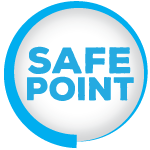What does an overdose look like?
Depressants include drugs such as opioids (heroin, fentanyl, oxycodone), benzodiazepines (Xanax), and alcohol. The signs and symptoms of an overdose on a depressant can include:
- Unresponsiveness
- Slow or no breathing (less than 1 breath every 5 seconds)
- Slow or abnormal heartbeat
- Cold, clammy skin
- Very small pupils
- Blue lips, skin, or fingernails
There is also a risk of overdose when using stimulants like cocaine and methamphetamine. A stimulant overdose can be fatal, causing cardiac arrest or stroke. Signs and symptoms of an overdose on a stimulant can include:
- Shaking/tremors
- Rapid heartbeat
- Irregular breathing
- Chest pain
- Fever
- Confusion, aggression, hallucinations, and/or panic
- Seizures
- Unresponsiveness
Learn more about drug overdose at the Harm Reduction Coalition’s website.
How can I prevent an overdose?
- Use fentanyl test strips to know whether the drug(s) you are using contain fentanyl, which carries a high risk of overdose.
- Reduce the amount of the drug you take at one time, especially if you have experienced an overdose recently or if you have not used drugs for a period of time.
- Use one drug at a time. Most fatal overdoses are the result of using more than one drug at the same time. This includes alcohol, which can be incredibly dangerous to use in combination with other substances.
- Do not use alone. Have someone that you trust with you who knows what drugs you’ve taken and can respond in case of an emergency.
How do I respond to an opioid overdose?
- Watch Project DAWN’s video
on overdose response and administering naloxone.
- Assess for
signs of overdose. Are they breathing? Is the person responsive? Can the
person speak?
- If the
person is unconscious or in a heavy nod, try to wake them up: Call his or
her name and/or say something that they might not want to hear, like “I’m going
to call 911” or “I’m going to give you naloxone.” If this does not work, try to
stimulate him or her with pain by rubbing your knuckles into the sternum.
- If the person
is unresponsive, call 911. Report that the person’s breathing has slowed or
stopped, he or she is unresponsive, and give the exact location.
- Administer
naloxone if there is a chance that the person has used any opioid (note:
other street drugs, like cocaine, may be contaminated with an opioid such as
fentanyl). It can take 2-3 minutes for naloxone to take effect. If you have
more than one dose of Narcan available, administer further doses as needed.
- If their
breathing has stopped or is very slow, begin rescue breathing. Place the
person on their back, head tilted back and chin up. Make sure there is nothing
in their mouth and pinch their nose closed. Breathe two slow breaths into their
lungs, making sure the chest rises. Continue providing one breath every 5
seconds.
- Naloxone
only lasts between 30 – 90 minutes, while the effects of the opioids may
last much longer. It is possible that the person may start to overdose again
once the naloxone wears off, so it is important to call 911 and stay with the
person.
How do I respond to a non-opioid overdose?
- Naloxone will only reverse the effects of opioids – it will NOT help someone who is experiencing an overdose on other drugs, including other depressants like benzodiazepines (like Xanax). However, it is possible that other drugs may be “cut” or contaminated with an opioid. If there is a chance that someone may be experiencing an opioid overdose, it is best to administer naloxone.
- When responding to someone who is showing signs of an overdose, such as unresponsiveness or symptoms of a heart attack or stroke, the first and most important thing you should do is to call 911.
- If they are unresponsive and you cannot detect their breathing or heartbeat, you can begin performing CPR after calling 911 until help arrives.
HIV & Drug Use | Hep-C & Drug Use | Other Conditions & Drug Use | Overdose Prevention & Response | Substance Use Disorder Treatment
